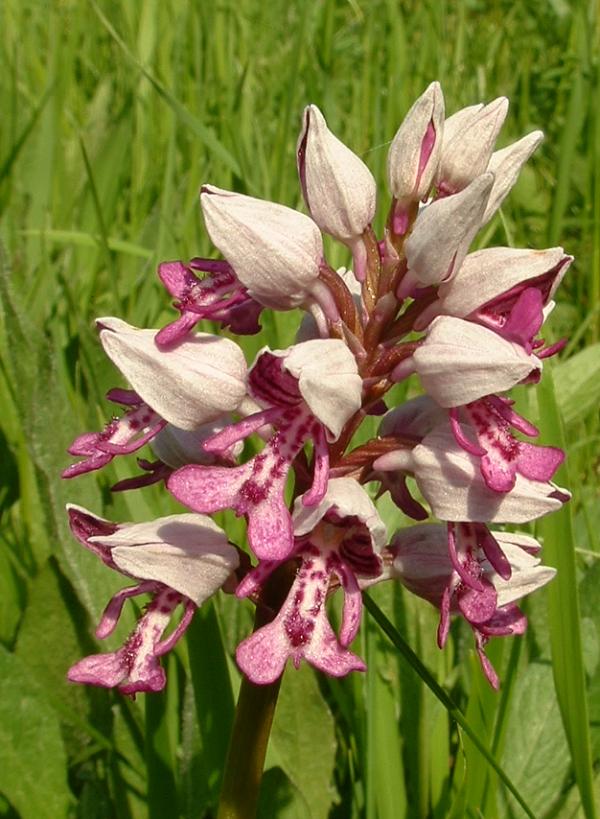Rex Graham Reserve on:
[Wikipedia]
[Google]
[Amazon]
Rex Graham Reserve is a biological Archive of reserve page formerly on the Suffolk Wildlife Trust website
/ref> The site is a disused
The site is a disused
JNCC page about the site's Special Area of Conservation statusEnglish Nature citation sheet for the siteA page at Natural England's website containing photographs of the site
{{SSSIs Suffolk Nature reserves in Suffolk Sites of Special Scientific Interest in Suffolk Sites of Special Scientific Interest notified in 1984 Special Areas of Conservation in England Chalk pits
Site of Special Scientific Interest
A Site of Special Scientific Interest (SSSI) in Great Britain or an Area of Special Scientific Interest (ASSI) in the Isle of Man and Northern Ireland is a conservation designation denoting a protected area in the United Kingdom and Isle of ...
east of Mildenhall in Suffolk
Suffolk () is a ceremonial county of England in East Anglia. It borders Norfolk to the north, Cambridgeshire to the west and Essex to the south; the North Sea lies to the east. The county town is Ipswich; other important towns include Lowes ...
. It is a Special Area of Conservation, and part of the Breckland
Breckland in Norfolk and Suffolk is a 39,433 hectare Special Protection Area (SPA) under the European Union Directive on the Conservation of Wild Birds. The SPA partly overlaps the 7,544 hectare Breckland Special Area of Conservation. As a la ...
Special Protection Area. It was formerly managed by the Suffolk Wildlife Trust./ref>
 The site is a disused
The site is a disused chalk pit
Chalk is a soft, white, porous, sedimentary carbonate rock. It is a form of limestone composed of the mineral calcite and originally formed deep under the sea by the compression of microscopic plankton that had settled to the sea floor. Chalk ...
, surrounded by woodland, and is primarily of interest for its population of Military Orchid
''Orchis militaris'', the military orchid, is a species of orchid native to Europe. It is the type species of the genus ''Orchis''.
Description
This plant grows to a height of 20 to 50 cm with a robust stem with rather drawn up oblong ...
s, as over 95% of the United Kingdom population of this species occurs at this site. Other plants found at the site include mezereon
''Daphne mezereum'', commonly known as mezereum, mezereon, February daphne, spurge laurel or spurge olive, is a species of ''Daphne'' in the flowering plant family Thymelaeaceae, native to most of Europe and Western Asia, north to northern Scand ...
, twayblade
''Neottia'' is a genus of Orchidaceae, orchids. The genus now includes the former genus ''Listera'', commonly known as twayblades referring to the single pair of opposite leaves at the base of the flowering stem. The genus is native to Temperat ...
, pyramidal orchid, ploughman's spikenard
''Pentanema squarrosum'', known as ploughman's-spikenard, is a species of plant in the family Asteraceae found in Europe, North Africa, and the Near East.
('' Inula conyza''), and Southern adderstongue
''Ophioglossum vulgatum'', commonly known as adder's-tongue, southern adders-tongue or adders-tongue fern, is a species of fern in the family '' Ophioglossaceae''.
The adder’s tongue fern is generally believed to have the largest number of chr ...
.
The discovery of a population of Military Orchids at this site occurred in 1955. Prior to this the species had never been recorded in East Anglia
East Anglia is an area in the East of England, often defined as including the counties of Norfolk, Suffolk and Cambridgeshire. The name derives from the Anglo-Saxon kingdom of the East Angles, a people whose name originated in Anglia, in ...
, having previously been recorded only in Southeast England. The population then was at least 500 plants, with over 100 flowering spikes; by 1958 the population had reached 2,854 plants, with about 10% flowering, a population level and flowering proportion that were maintained throughout the 1960s. By 1971 however, only 252 plants were present, due to scrubbing over, as a result of the erection of the protective fence. Scrub clearance and removal of some surrounding trees allowed the population to recover, and subsequent counts include 1,115 plants in 1990 and "too many to count" (Harrap and Harrap 2005) in 2000, when 748 plants were recorded flowering.
Genetic analysis of the orchids at Rex Graham has shown that they are distinct from those at the other two English sites, and represent an independent colonisation from Europe.
References
Sources
* Harrap, Simon and Annie Harrap (2005) ''Orchids of Britain and Ireland, a field and site guide''External links
JNCC page about the site's Special Area of Conservation status
{{SSSIs Suffolk Nature reserves in Suffolk Sites of Special Scientific Interest in Suffolk Sites of Special Scientific Interest notified in 1984 Special Areas of Conservation in England Chalk pits